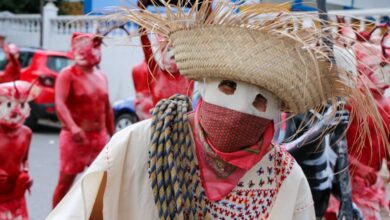Decoding the Deluge: Understanding Rain Jacket Specs

Ever been caught in an unexpected downpour? One minute the sky is blue, the next you’re drenched, shivering, and cursing your optimism. We’ve all been there – the sudden, soaking misery that can turn a pleasant walk or an ambitious hike into a forced march of regret. When it rains, it really does pour, and that’s precisely why a good rain jacket isn’t just a nice-to-have; it’s an absolute essential.
But stepping into the world of rain gear can feel overwhelming. Waterproof ratings, breathability scores, proprietary membranes, DWR coatings… it’s enough to make you throw your hands up and just buy a cheap poncho. Fear not, because by 2025, the choices are better than ever, offering incredible performance across all budgets and activities. Our goal here is to cut through the jargon, offer some expert insight, and guide you to one of the 9 best rain jackets available, whether you’re on a tight budget, committed to eco-friendly choices, hitting the trails, or pounding the pavement.
Decoding the Deluge: Understanding Rain Jacket Specs
Before we dive into specific recommendations, let’s get savvy about what makes a rain jacket truly effective. It’s not just about a pretty color or a familiar brand name. The magic lies in the technical specifications, which, once understood, become your best friend in judging a jacket’s true capability.
The two biggest numbers you’ll encounter are waterproof rating and breathability. Waterproofing is measured in millimeters (mm HH – Hydrostatic Head). This indicates the height of a column of water the fabric can withstand before it leaks. A jacket with 10,000mm HH is good for light to moderate rain, while 20,000mm+ is built for serious downpours and prolonged exposure. For reference, GORE-TEX often sits in the 28,000mm+ range.
Breathability, often overlooked, is equally crucial. It’s measured in grams per square meter over 24 hours (g/m²/24hr MVTR – Moisture Vapor Transmission Rate). This tells you how much water vapor (your sweat) the fabric can let escape. A rating of 10,000 g/m²/24hr is decent for light activity, while 20,000+ is excellent for high-exertion activities like running or fast hiking. Without good breathability, you’ll end up wet from the inside out, making the waterproof shell feel useless.
Beyond these numbers, look for details like fully taped seams (where every seam is sealed to prevent leaks), waterproof zippers (often YKK AquaGuard), and adjustable hoods and cuffs. The fabric itself typically comes in 2-layer, 2.5-layer, or 3-layer construction. 3-layer offers the best durability and breathability, making it ideal for rugged use, while 2.5-layer strikes a good balance for packability and performance. 2-layer is usually found in more casual or budget-friendly options.
Our Top Picks for 2025: Tailored for Every Adventure
We’ve scoured the market to bring you categories that represent the cream of the crop for diverse needs. Remember, the “best” jacket is ultimately the one that fits your specific adventures and priorities.
Budget-Friendly Buys That Don’t Skimp
You don’t need to empty your wallet to stay dry. Entry-level rain jackets have come a long way, offering impressive protection for occasional use or less extreme conditions. These often feature proprietary waterproof-breathable membranes or durable water repellent (DWR) coatings that hold up well in city commutes or light day hikes. They might be a bit heavier or less breathable than their high-end counterparts, but they offer incredible value. Think jackets that cost less than a fancy dinner but protect you through several seasons of errands and dog walks. Look for trusted brands like Marmot, REI Co-op, or Columbia for solid performance without breaking the bank.
Green Gear: Eco-Conscious Choices
For those prioritizing the planet as much as personal comfort, the eco-friendly rain jacket market has exploded. Manufacturers are increasingly using recycled fabrics, like those made from post-consumer plastic bottles, and PFC-free DWR coatings. Per- and polyfluoroalkyl substances (PFCs) were once the industry standard for waterproofing but are harmful to the environment and human health. Now, many brands offer high-performing alternatives. Look for certifications like bluesign® or Oeko-Tex, which indicate sustainable and ethical production practices. Brands like Patagonia, Arc’teryx (with their ReBird program), and Vaude are leaders in this space, proving that reducing your environmental footprint doesn’t mean sacrificing performance.
Trail-Ready: Hiking & Backpacking Essentials
When you’re miles from shelter and the weather turns, your hiking rain jacket is your lifeline. These jackets demand robust waterproofing (20,000mm+ HH), excellent breathability (20,000+ g/m² MVTR), and durable 3-layer construction. Features like pit zips for ventilation during strenuous climbs, helmet-compatible hoods (if you’re into climbing), and strategically placed pockets that are accessible even with a backpack on are crucial. Packability is also key – it needs to stow away small when not in use. Think Patagonia’s Torrentshell, Outdoor Research’s Helium, or specific GORE-TEX models from Mammut or Arc’teryx for reliable protection against sudden mountain squalls and persistent drizzle.
Speed and Agility: Best for Runners
Running in the rain requires a very specific type of jacket. It needs to be incredibly lightweight, highly breathable, and offer an articulated fit that doesn’t restrict movement. Waterproofing is still important, but breathability often takes precedence to prevent that clammy, “running in a plastic bag” feeling. Many running-specific jackets utilize ultra-light 2.5-layer fabrics or advanced single-layer permeable membranes. Reflective elements are a must for visibility in low light. Look for minimalist designs, often without bulky pockets, to keep weight down. Brands like Salomon, Nike Trail, and Rab have excellent options tailored for runners who refuse to let a little rain stop their stride.
Beyond the Hype: Practical Tips for Choosing Your Perfect Shell
Once you’ve narrowed down your categories, a few final considerations can make all the difference in finding your ultimate rain jacket.
Consider Your Primary Use: Are you mostly commuting in the city, going on weekend hikes, or planning a multi-day trek? Your answer will dictate the level of durability, breathability, and features you need. Don’t overbuy for casual use, but never underbuy for serious adventures.
Layering is Key: Think about what you’ll typically wear underneath. A good rain jacket should fit comfortably over your base layers and mid-layers without feeling restrictive. If you plan to layer heavily, consider sizing up slightly. Always try on a jacket with your typical outfit, if possible.
Fit and Freedom of Movement: A jacket that binds at the shoulders or rides up when you raise your arms is simply not going to work. Look for features like articulated elbows and a good cut that allows for a full range of motion. This is especially important for active pursuits.
Maintenance Matters: Even the best rain jackets need a little TLC. Regularly washing your jacket with technical gear-specific cleaners (like Nikwax or Grangers) helps maintain its DWR coating and breathability. Over time, DWR wears off, but it can often be reapplied with wash-in or spray-on treatments.
Choosing the right rain jacket isn’t just about avoiding a soggy fate; it’s about empowering yourself to embrace the outdoors, come what may. With the advancements in materials and design for 2025, there’s a perfect shell out there for every adventurer.
Conclusion
The right rain jacket is more than just a piece of clothing; it’s a shield that lets you defy the elements, transforming a potentially miserable experience into a mere shrug of indifference. From bustling city streets to remote mountain trails, being prepared for the inevitable downpour is a non-negotiable part of enjoying the world around us. We’ve explored the technical heart of these essential garments and highlighted the diverse range of options available in 2025 – from the budget-conscious to the eco-warrior, the intrepid hiker to the dedicated runner.
Remember, the “best” rain jacket isn’t a one-size-fits-all answer. It’s the one that aligns perfectly with your activities, your values, and your budget. Take the time to understand the specs, consider your needs, and invest wisely. That way, when the heavens open, you won’t just endure the rain – you’ll barely even notice it. So go ahead, step outside, embrace the weather, and let your perfect rain jacket keep you dry and comfortable, no matter what nature throws your way.





